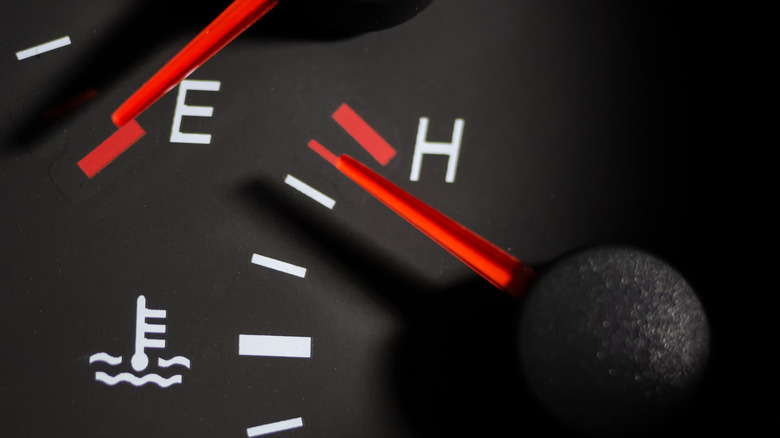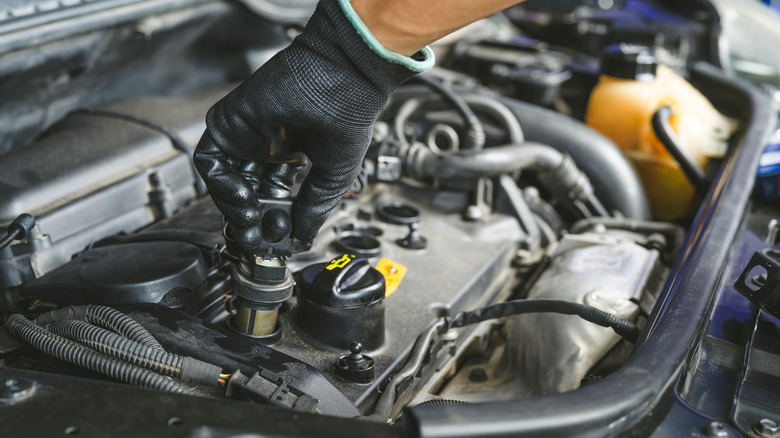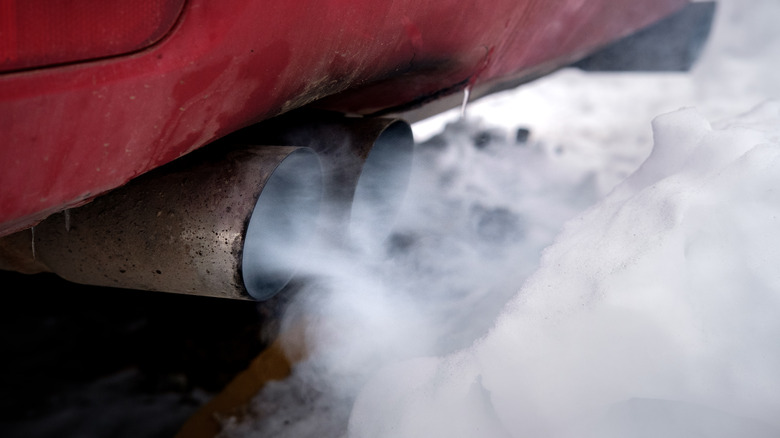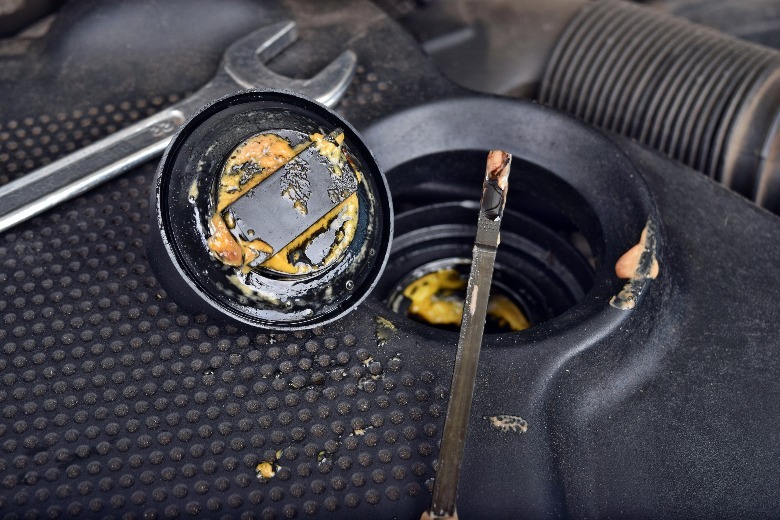
Velimir Zeland/Shutterstock
Inside an internal combustion engine is an intricate web of small tunnels or passageways that enable oil or coolant to flow, which helps keep everything lubricated and operating at the proper temperature. The head gasket manages the oil and coolant flow by sealing the engine block and cylinder head, ensuring that both fluids are not entering or dripping into the combustion chamber as the engine does its thing.
However, the head gasket won’t last forever. Head gasket leaks are inevitable as they resist changing temperatures, vibrations, pressure changes, and material flexing as the engine racks up the miles. As someone who used to tinker obsessively under the hood, I discovered that some telltale signs of a blown or leaking head gasket are easy to ignore — especially if there are no symptoms of rough idling or degraded engine performance.
The reason the signs are hard to identify is the head gasket could fail in many areas on top of the engine block. Here are the things to check so you can determine if your car needs to visit a mechanic for a new head gasket.
Persistent overheating, and low coolant or oil levels

ERIK Miheyeu/Shutterstock
If your vehicle persistently overheats and loses coolant in the reservoir, it could point to a blown head gasket between a water passage and the outside of the engine block. Depending on the severity of the breach, the coolant may leak while driving or when the engine is not running, which leaves a pool of coolant under the engine when the car is parked.
Consistently losing coolant will eventually lead to overheating, which could lead to more engine damage. If the leak is small, the coolant could evaporate as it leaks, making the symptom a bit challenging to spot.
Meanwhile, a breach in the head gasket between an oil gallery will cause noticeable leaks and low oil levels. Periodically replenishing the engine with fresh motor oil is a quick fix, but replacing the head gasket sooner — before the leak gets worse — is better. Oil leaks caused by faulty head gaskets could affect the oil pressure as the engine operates and cause excessive friction as well.
Rough idling and poor engine performance

Setta Sornnoi/Shutterstock
If the head gasket failure causes a compression leak between neighboring cylinders, it could lead to compression loss and symptoms like rough idling and engine misfires. In addition, a head gasket leak between the cylinder and the engine’s outside would also cause compression loss and performance issues like inconsistent idling, excessive vibrations, and tepid acceleration.
Sometimes, a running engine succumbing to compression loss will produce weird ticking noises that indicate an exhaust leak. Persistent engine misfires may point to a head gasket leak after ruling out bad spark plugs, vacuum leaks, clogged injectors, or a dirty throttle body.
Middling engine performance, overheating, and coolant loss would typically go hand-in-hand when dealing with a blown head gasket, but it all depends on the point of failure on the seal. The symptoms will vary since certain cars and engine models are prone to early head gasket wear, with some car brands and engines capable of lasting hundreds of thousands of miles without experiencing head gasket issues.
White or blue smoke exiting the tailpipe

Ambartsumian Valery/Shutterstock
When the head gasket fails between a cylinder and the oil gallery, the engine could suck oil in the cylinder and burn it with the air and fuel mix. The process will cause blue smoke to exit the tailpipe, which smells foul and irritates the eyes. The situation would also lead to low oil levels and contamination as the combustion gasses mix with the oil, which is terrible news for vital internal parts like the crankshaft main bearings.
On the other hand, if the head gasket fails between the cylinder and a water passage, coolant could get sucked inside the cylinder and mix with the air and fuel, causing excessive white smoke. Moreover, the compression gasses could mix with the coolant and over-pressurize the cooling system, causing permanent damage to the radiator, water pump, and coolant hoses.

Meanwhile, a head gasket failure between a water passage and an oil gallery will mix the oil with the coolant. The result is contaminated oil, or a whitish and yellowish, milky sludge under the oil filler cap and inside the engine.
Burning oil, water, or both with the air/fuel mixture could also damage the catalytic converter, an expensive repair that would cost anywhere from $200 to $2,000 — excluding labor. It’s not wise to continue driving if your car’s engine has a blown head gasket. Your best recourse is to consult a mechanic or garage to rectify the problem.